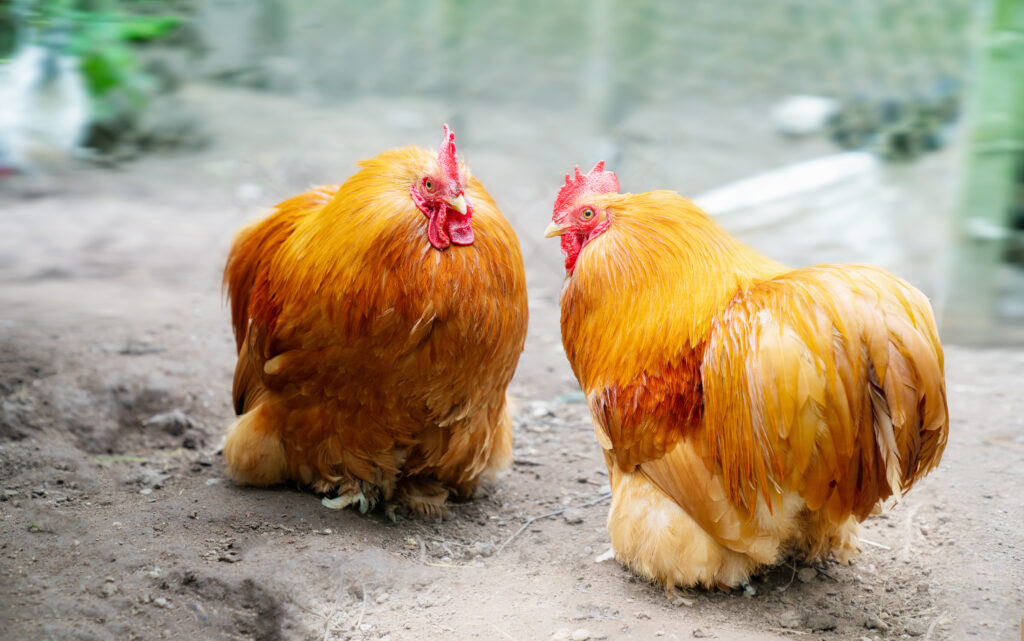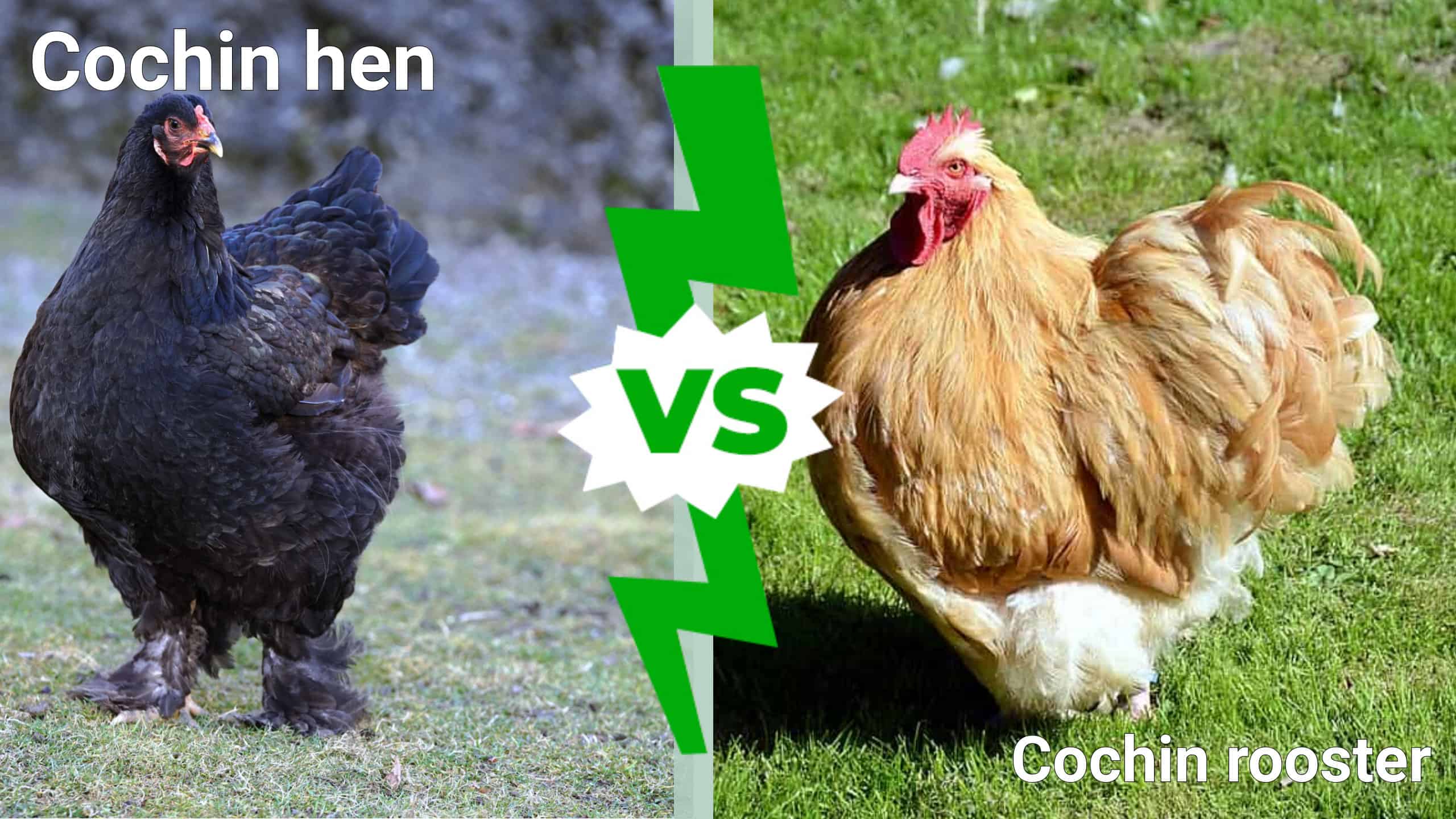Cochin chickens were once so incredibly popular they sparked a craze known as hen fever. These large, ornamental chickens originated in China, but their popularity really took off in the 1840s. Great Britain’s Queen Victoria loved birds of all sorts, and she imported specimens from all over the world for her private collection. After receiving a gift of seven Cochin chickens in 1842, she had a special aviary constructed just so she could spend time watching the stately fowl.
Influencers were then as they are today. Once wealthy onlookers discovered Queen Victoria’s affection for Cochin chickens, they had to have some of their own. As members of the nobility and the upper class scrambled to build flocks of Cochins the price of the chickens soared. Life was good for both Cochin breeders and investors until the bottom fell out of the market and many people lost a fortune. Alas, so much for hen fever.
Today, Cochin chickens are a popular choice for backyard flocks. Their popularity lies in the fact that people simply enjoy their large size, uniquely fluffy appearance, and exceptionally friendly and calm demeanor. They no longer command exorbitant prices, but owners still love them. Let’s take a moment to compare the Cochin hen vs. rooster and explore some of their important differences.

Cochin roosters and hens are quite similar in appearance but do show some sexual dimorphism.
©Albina Kosenko/iStock via Getty Images
Cochin Hen vs. Rooster: Size
The popular Cochin chicken is among the largest chicken breeds. These birds are only slightly smaller than the massive Brahma chickens. Cochins look like large, puffy, rounded hearts when viewed from the side. They have a tendency toward obesity, and their massive bodies are too heavy for flight. They are even too heavy for jumping down from heights, so their perches and nest boxes should be kept relatively low to the ground.
Like most other breeds, Cochin chickens exhibit significant sexual dimorphism. Hens generally weigh less and stand a bit shorter than roosters. Cochin roosters can reach heights up to 22 inches and attain weights of around 11 pounds. On the other hand, Cochin hens only grow to about 15 inches tall and weigh about 8.5 pounds on average.
Bantam-sized Cochin chickens are much smaller than their full-sized counterparts. Bantam Cochin hens weigh only about 1.5 pounds, while bantam Cochin roosters reach only approximately 2 pounds.
Cochin Hen vs. Rooster: Plumage
Cochin chickens have full, soft, and abundant feathers. Their plumage gives the chickens a very fluffy and rounded appearance. Their feathers extend down their legs and feet, completely covering all but the inner two toes on each foot. Both male and female Cochins make excellent show chickens due to their beautiful plumage and their calm demeanor.
This breed comes in a variety of colors, with white, recognized by the American Poultry Association in 1874, being the most common. Other recognized colors in the United States include buff, partridge, black, blue, brown, silver laced, and golden laced, and barred. Up to 20 different colors are recognized among the bantam varieties. Depending on the color variation, roosters can be almost identical to hens or can vary significantly. For instance, buff Cochin roosters and hens are just about the same color all over, with the only real difference in the plumage of hens and roosters being the length of hackle and tail feathers. Golden-laced Cochins, however, look quite different from one another. Hens of this variety are more or less uniformly feathered, while roosters have bright, coppery hackles and shiny black tail feathers.

Depending on the color, Cochin hens may be difficult to distinguish from roosters.
©Dewi Cahyaningrum/Shutterstock.com
Cochin hens have similar feathers on their neck as they have on their back and breast. They have relatively short wings and short tails with their feathers held upright. Cochin roosters have longer hackle feathers on their necks, sometimes in contrasting colors to the feathers on their backs and breasts. They have relatively short tail feathers that are also held upright. These feathers curve gracefully in a rounded shape, lending to the bird’s heart-shaped appearance when viewed from the side.
Cochin Hen vs. Rooster: Other Physical Characteristics
Although Cochin hens and roosters have similar looks overall, they do differ in a couple more of their physical characteristics. Cochin roosters have medium-sized, bright red, single combs. They also have long, bright red wattles. Cochin hens have small, rounded, red combs and small red wattles. When seen together, it is easy to tell the difference between mature Cochin hens vs. roosters based on these traits, along with their differences in size and plumage.

Cochin roosters have long red wattles and medium, single, red combs.
©Nightflyer, CC BY 3.0 <https://creativecommons.org/licenses/by/3.0>, via Wikimedia Commons – Original / License
Cochin Hen vs. Rooster: Temperament
Owners attest that Cochin chickens are generally friendly, calm, and even submissive. Even the roosters do not mind being handled, so they are quite good with children and they make great pets. They also get along very easily with other chickens in a backyard flock. Cochins are comparatively lazy birds. They tend to eat a lot, and they have a tendency to become overweight and even suffer from health problems related to obesity.
Cochin hens tend to be especially broody and maternal. They make excellent mothers, not only to their own chicks but also to chicks of other breeds whose mothers might not be so well equipped. Owners often use Cochin hens to foster chicks from other hens. Also, because they are so large, Cochins can even hatch the eggs of ducks and turkeys.

Cochin chickens, even the roosters, are calm and exceptionally friendly.
©Algirdas Gelazius/Shutterstock.com
Full-size Cochin roosters are very laid back and friendly. They get along well with people and other types of chickens, and rarely, if ever, behave aggressively. Bantam-sized Cochin roosters have a tendency to get scrappy and fight with each other over territory.
Cochin Hen vs. Rooster: Egg and Meat Production
Cochin chickens, though primarily an ornamental breed today, were originally bred for both meat and egg production. They don’t come close to comparing with the best egg producers, but they do produce a sizable quantity of meat.
Owners often harvest Cochin roosters for roasting when they are young, as early as four months. Their meat can reportedly get quite stringy and tough if they are allowed to grow longer than that. However, fully grown roosters can attain weights of 11 pounds or more, and the birds do still make good soup after they fully mature.
Cochin hens are used more for eggs than meat, although fully grown hens do also make good soup birds. Cochins begin laying eggs later than most breeds, around eight to nine months of age. They average roughly 160 eggs per year, laying more eggs during cooler months than during the summer. This is the opposite of many other breeds, which slow down their laying through the winter. Therefore, keeping Cochin hens in a mixed flock may increase the chances of having fresh eggs all year round. Unfortunately, Cochin hens continue laying for only about two to three years, though their lifespan can be eight years or more.
Cochin Hens vs. Roosters: A Summary
Here is a summary of the differences between Cochin hens and roosters. Although this breed does express sexual dimorphism, both sexes look more similar to each other than many other breeds. Both are large, fluffy birds with relatively short combs and abundant feathers that extend down the legs. The differences between Cochin hens and roosters are more easily appreciated when the two sexes are seen next to one another, and especially once the individuals are fully mature.
| Hens | Roosters | |
|---|---|---|
| Size | Up to 8.5 pounds | Up to 11 pounds |
| Plumage | Abundant, full, fluffy feathers; feathered legs and feet; short, upright tail | Same as female, but with longer hackle feathers and curved sickle feathers in tail |
| Other Traits | Short, red, rounded comb and short, red wattles | Medium, red, single comb and long, red wattles |
| Temperament | Friendly and calm; tendency to go broody even with foster eggs or chicks | Friendly and calm; not aggressive except for bantams |
| Production | Same as female, but with longer hackle feathers and curved sickle feathers in the tail | Best quality meat before 4 months of age; meat after that may be stringy and tough, but good for soup |
Thank you for reading! Have some feedback for us? Contact the AZ Animals editorial team.








